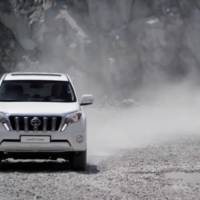Over the decades they served, the red-double deckers became an essential part of the London street view. Therefore when the old Routemasters became hopelessly outdated, London’s mayor commissioned a new bus that had the distinctive features of the old bus, yet was packed with all the latest technologies.
This is how the New Bus for London, or NB4L was born. The design of the New Routemaster was picked after an open competition in 2008. Designed by Heatherwick Studio and built by Wrightbus, the New Routemaster features just about every distinctive feature of the predecessor: it has a double-decker design, with a ‘hop-on hop-off’ rear open platform.
Since the New Routemasters entered into service in 2012, the old double-deckers were reassigned to run mostly heritage tours; many of these beloved machines were sold and exhibited as museum pieces all around the world, or used as rolling libraries, hippie buses and so on.
The accessibility of the New Routemaster is exemplary. It has three doors; the front and rear doors lead to staircases to the upper deck. The rear door is open, meaning that travelers can hop on and hop of whenever they like. The lights of the interior of the New Routemaster are provided by LED clusters, and also there is a climate-controlled ventilation system.
Another important thing about the New Routemaster is that it only needs one person to operate. The job of the conductor is replaced by the Oyster card system, an essential part of London’s advanced public transport system.
However, the most interesting thing about the New Routemaster is its hybrid drive. The bus runs with the help of an electric motor powered by a battery pack. A diesel engine runs only when the battery needs to be recharged.
A New Routemaster costs £354,500, somewhat more than the price of £326,000 for a standard bus, but the new double-decker is certainly worth the money: people simply love it. And if it proves to be just as rugged as its predecessor, the New Routemaster has all the chances to become another classic.
25 Aug 2013
1
The New Routemaster: Another London Icon?
1 Comment
Comments are closed.



With 62 seats at a cost of the cost per seat is ~ can’t wait to posh it up on a 38 soon”, “New Routemaster bus for London to replace the iconic double-decker”, “The first new Routemaster bus begins running on a route from Victoria station to east London.